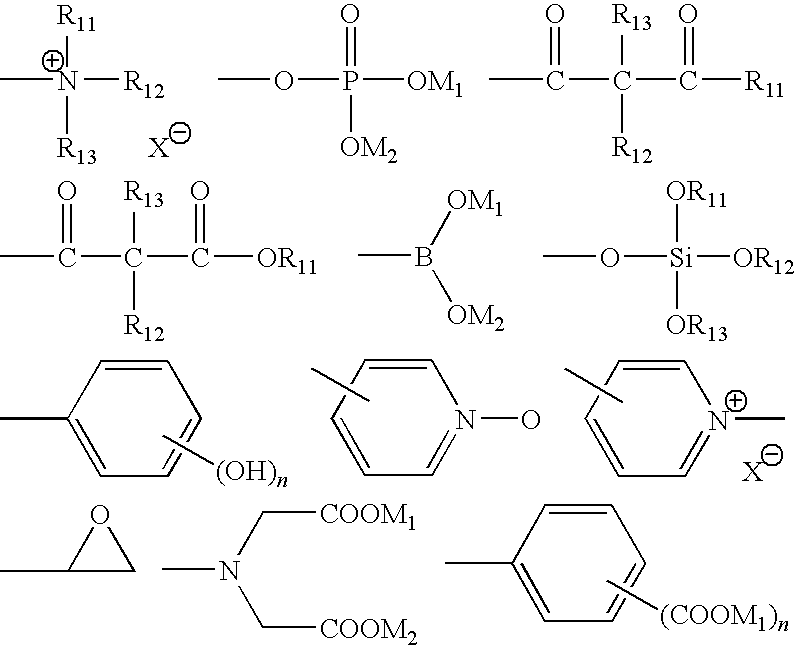Lithographic printing process
a technology of lithographic printing and printing plate, which is applied in the field of lithographic printing process, can solve the problems of image-recording layer of presensitized plate used in the conventional process that is not fixed, image cannot be recorded with ir laser, and weaken the cohesion of the layer, etc., and achieves excellent plate wear.
- Summary
- Abstract
- Description
- Claims
- Application Information
AI Technical Summary
Benefits of technology
Problems solved by technology
Method used
Image
Examples
example 1
Preparation of Aluminum Support
[0203]An aluminum plate (material: 1050) having 0.3 mm thickness was subjected to oil-removing treatment with 10 wt. % aqueous solution of sodium aluminate at 50° C. for 30 seconds to remove rolling oil on the surface. The surface of the plate was then grained with three brushes having nylon bristles of 0.3 mm diameter and with a suspension of pumice (median size: 25 μm) in water (specific gravity: 1.1 g / cm3), and washed with water. The plate was then immersed for etching in 25% aqueous solution of sodium hydroxide at 45° C. for 9 seconds, washed with water, immersed again in 20% nitric acid at 60° C. for 20 seconds, and washed with water. In this way, the surface was etched in an amount of approx. 3 g / m2.
[0204]The plate was then successively roughened electrochemically with alternating current of 60 Hz. The electrolyte used in the treatment was 1 wt. % aqueous solution of nitric acid (containing aluminum ion in 0.5 wt. %) at 50° C. In the treatment, a...
examples 2-5
[0212]The procedure of Example 1 was repeated except that the compound (4), (13), (17) or (33) was used in place of the compound (9), to produce a presensitized lithographic printing plate.
example 6
[0214]The coating solution consisting of the following components was prepared and spread with a bar coater to coat the aluminum support, and then dried in an oven at 100° C. for 60 seconds to form the image-recording layer in the amount of 1.0 g / m2 (dry condition). Thus, a presensitized lithographic printing plate was produced.
[0215]
Coating solution for image-recording layerThe following infrared-absorbing dye (2)0.05gThe following polymerization initiator (1)0.2gThe following binder polymer (1) having the average molecular weight of 80,0000.5gThe compound (8)0.05gIsocyanulic acid ethyleneoxide-modified triacrylate(NK ester M-315, from Shin-Nakamura Chemical Co., Ltd.)1.0gThe fluorine-containing surface active agent (1) in Example 10.1gMethyl ethyl ketone18.0gInfrared-absorbing dye (2)Polymerization initiator (1)Binder polymer (1)
PUM
| Property | Measurement | Unit |
|---|---|---|
| pKa | aaaaa | aaaaa |
| wavelength | aaaaa | aaaaa |
| wavelength range | aaaaa | aaaaa |
Abstract
Description
Claims
Application Information
 Login to View More
Login to View More - R&D
- Intellectual Property
- Life Sciences
- Materials
- Tech Scout
- Unparalleled Data Quality
- Higher Quality Content
- 60% Fewer Hallucinations
Browse by: Latest US Patents, China's latest patents, Technical Efficacy Thesaurus, Application Domain, Technology Topic, Popular Technical Reports.
© 2025 PatSnap. All rights reserved.Legal|Privacy policy|Modern Slavery Act Transparency Statement|Sitemap|About US| Contact US: help@patsnap.com



